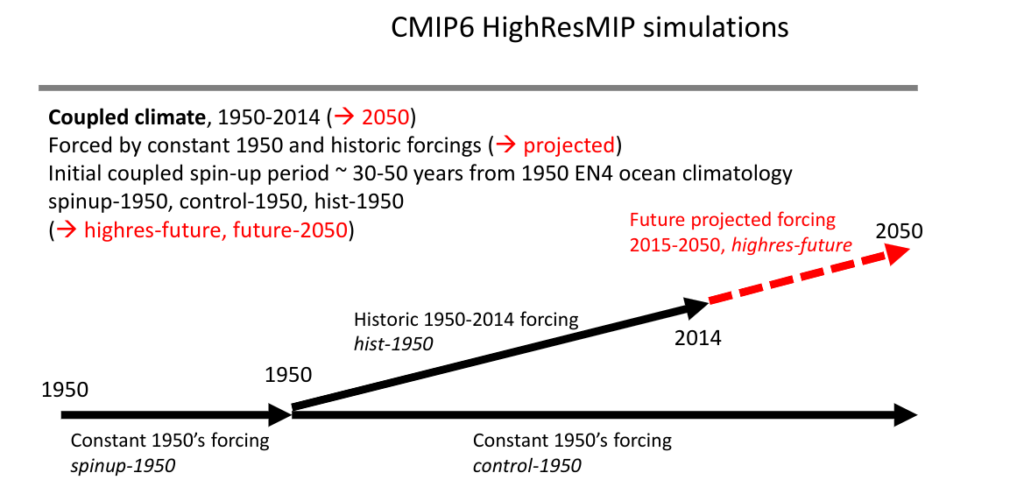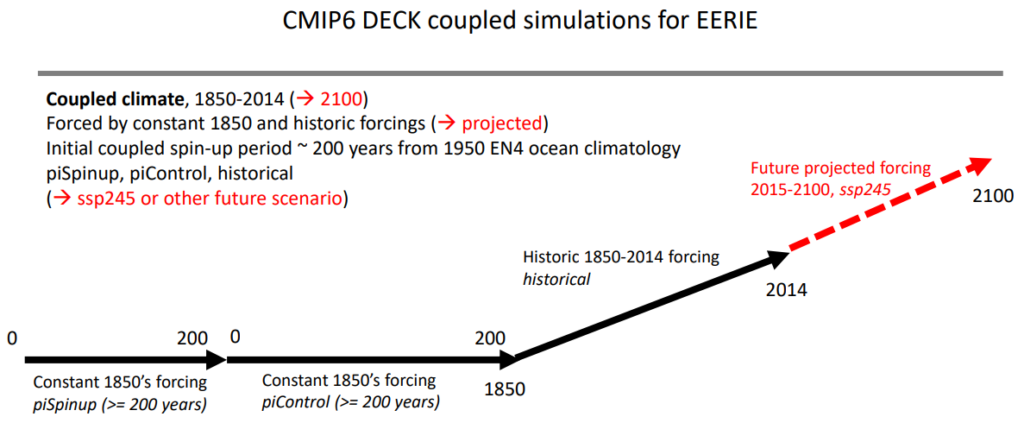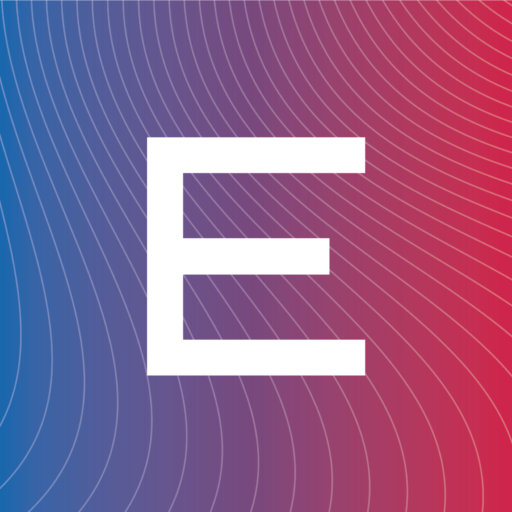The main EERIE simulations are conducted following the CMIP6 HighResMIP protocol.
This comprises a coordinated set of experiments designed to assess global model performance in the representation of processes in the atmosphere and ocean, specifically designed with higher resolution models in mind, that is those with grid spacings of 25km or less (in EERIE less than 10km).
EERIE focuses on the coupled simulations which span the period 1950-2050, with the possibility of extending to 2100. The details of the simulation design can be found in Haarsma et al. (2016), as well as on the HighResMIP website.

These simulations serve as a more reliable source for assessing climate risks that are associated with small-scale weather phenomena such as tropical cyclones, are part of the CMIP6 model intercomparison exercise and were widely cited in the IPCC Sixth Assessment Report of Working Group I.
An updated simulation design (HighResMIP2) is currently in review.
In addition, one of the EERIE groups is running simulations following the CMIP6 DECK protocol, that is including these simulations at different resolutions: 200 years of pre-industrial (1850) control, historical 1850-2014, and future scenario 2015-2100.

Such simulations enable more assessment of longer term variability and change than in HighResMIP, but are much more expensive and longer to run, particularly at higher resolutions.
We aim to use the strengths of both types of simulation design to better understand the role of the ocean mesoscale in global climate across different models.
